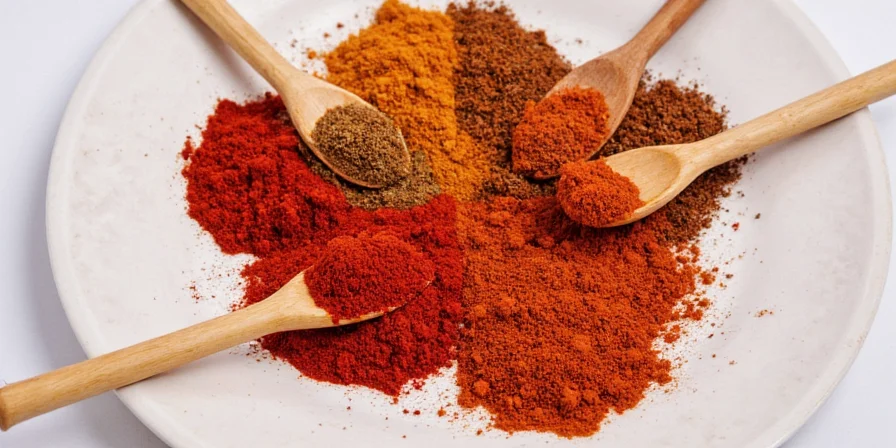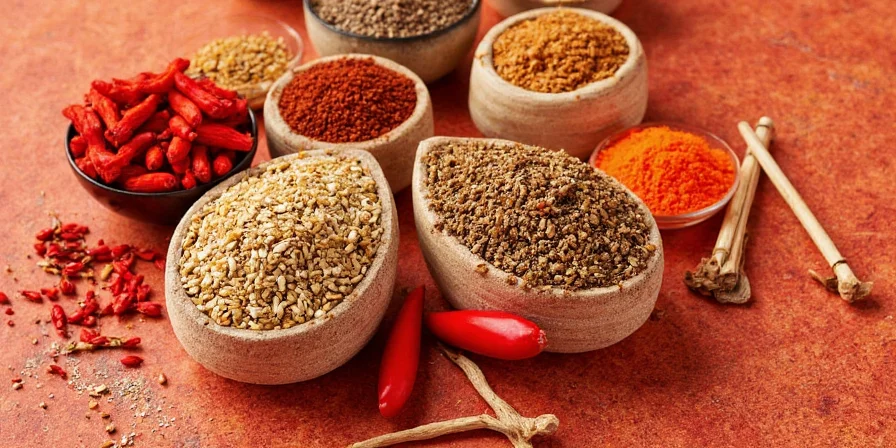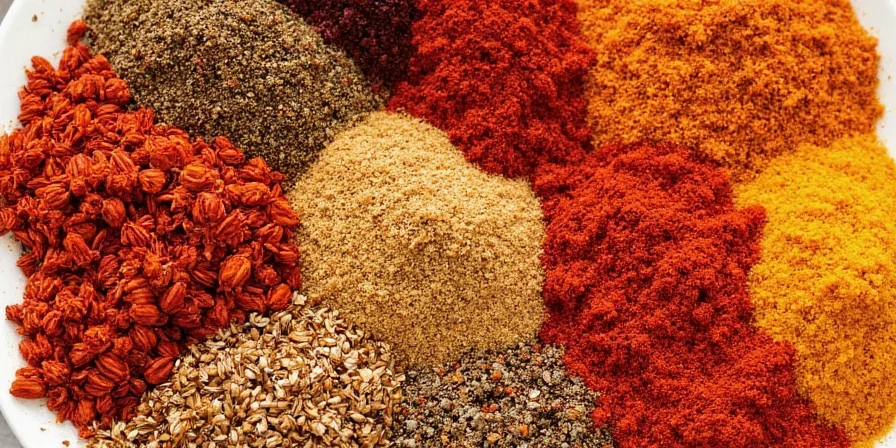5 Essential Chinese Cuisine Spices You're Probably Not Using (But Should Be!)
Introduction: Spicing Up Your Kitchen with Chinese Flavors
Hey there, spice lovers! If you've ever wondered why your homemade kung pao chicken just doesn’t taste like the one from your favorite takeout spot, you might be missing a few key players in the spice rack. In this blog post, we’re diving deep into five essential Chinese cuisine spices that are probably hiding in your pantry—or should be!
Whether you're a seasoned chef or someone who’s still learning how to pronounce “Sichuan peppercorn” without tripping over your tongue, this guide will give you a flavorful tour of traditional Chinese spices, their roles, and how to use them like a pro.
Table of Contents
- Why Chinese Spices Matter
- Spice #1: Star Anise – The Flavorful Flower
- Spice #2: Sichuan Peppercorns – Tingling Taste Explosion
- Spice #3: Cinnamon (Cassia) – The Sweet & Savory Superstar
- Spice #4: Cloves – Little Powerhouses with Big Personality
- Spice #5: Fennel Seeds – The Liqueur-Like Wonder
- How to Store and Use These Spices Like a Pro
- Conclusion: Spice It Up the Chinese Way!
Why Chinese Spices Matter
Let’s face it—spices are not just for show. They’re the unsung heroes of flavor, aroma, and even health benefits. Chinese cuisine spices, in particular, have been used for centuries in both culinary and medicinal traditions. Their role goes beyond taste; they balance the yin and yang of a dish, create harmony, and add depth that you just can't replicate with salt and pepper alone.
A Quick Comparison: Western vs. Chinese Spices
| Western Common Spices | Chinese Traditional Spices |
|---|---|
| Oregano | Star Anise |
| Black Pepper | Sichuan Peppercorns |
| Cinnamon | Cassia Bark |
| Cloves | Fennel Seeds |

Spice #1: Star Anise – The Flavorful Flower
If you thought star anise was just something Santa Claus puts on his cookies, think again! This licorice-flavored wonder is a staple in Chinese braises, soups, and stews.
Flavor Profile:
- Licorice-like, sweet, warm
- Mildly bitter finish
Best Used In:
- Braised pork belly
- Red-braised beef
- Five-spice powder blends
Pro Tip:
Use whole pods in slow-cooked dishes and remove before serving—those little stars pack a punch but aren’t meant to be eaten whole!
Spice #2: Sichuan Peppercorns – Tingling Taste Explosion
This isn’t your regular black pepper. Oh no, Sichuan peppercorns cause a numbing sensation on your tongue—yes, like a mild electric shock. But don’t worry, it’s totally delicious.
Flavor Profile:
- Tingly, citrusy, slightly woody
- Creates a numbing effect on the lips and tongue
Best Used In:
- Kung Pao Chicken
- Mala Hotpot
- Dry-fried spicy dishes
Pro Tip:
Toast them lightly in a dry pan before grinding for maximum flavor. And remember: a little goes a long way!
Spice #3: Cinnamon (Cassia) – The Sweet & Savory Superstar
Yes, we all know cinnamon—but in China, they’re more likely to be using cassia bark. Similar to cinnamon but bolder and less sweet, it’s often confused with its cousin in many kitchens.
Flavor Profile:
- Earthy, warm, mildly sweet
- More intense than true cinnamon
Best Used In:
- Red-cooked meats
- Spiced broths
- Five-spice powder
Pro Tip:
Use sticks in braised dishes and whole in slow cookers. For baking, ground cassia works great in steamed buns or red bean pastries.
Spice #4: Cloves – Little Powerhouses with Big Personality
Cloves are like the tiny warriors of the spice world—small in size but huge in impact. Often used in meat dishes and marinades, cloves add a sharp, sweet warmth.
Flavor Profile:
- Intensely aromatic, earthy, sweet-spicy
- Medicinal undertones if overused
Best Used In:
- Pork belly recipes
- Marinades for roasted meats
- Winter warming soups
Pro Tip:
Stick a clove into an onion to infuse stocks or broths with subtle warmth. It's like aromatherapy for your kitchen!
Spice #5: Fennel Seeds – The Liqueur-Like Wonder
With a flavor reminiscent of anise or licorice, fennel seeds are commonly used in northern Chinese dishes and spice blends. They add a bright, crisp note to heavier meats.
Flavor Profile:
- Subtle licorice, fresh, herbal
- Earthy sweetness
Best Used In:
- Northern Chinese lamb dishes
- Stir-fries with rich sauces
- Homemade Chinese sausages
Pro Tip:
Toast fennel seeds in a dry pan to bring out their oils before grinding or adding to dishes. It’s like waking up their inner flavor genie!
How to Store and Use These Spices Like a Pro
Great spices need great care! Here’s how to keep your Chinese spice collection fresh, fragrant, and ready to rock any recipe:
Storage Tips:
- Store whole spices in airtight containers away from light and heat
- Grind only what you need—freshly ground = more flavor
- Label and date your spices to track freshness
Usage Hacks:
- Create your own Chinese five-spice blend using these five spices
- Infuse oils with toasted spices for quick stir-fry enhancements
- Add whole spices to rice water for extra flavor

Conclusion: Spice It Up the Chinese Way!
So there you have it—five powerful, time-tested, and flavor-packed Chinese cuisine spices that deserve a spot in your kitchen arsenal. From the floral notes of star anise to the tingling zing of Sichuan peppercorns, each one plays a vital role in creating the signature complexity of Chinese dishes.
Remember, spices aren’t just about heat—they’re about balance, aroma, and storytelling through flavor. So next time you're staring into your pantry wondering how to level up your meal, reach for one of these hidden gems.
Now go forth, sprinkle some magic, and turn your dinner table into a mini Great Wall feast!











 浙公网安备
33010002000092号
浙公网安备
33010002000092号 浙B2-20120091-4
浙B2-20120091-4